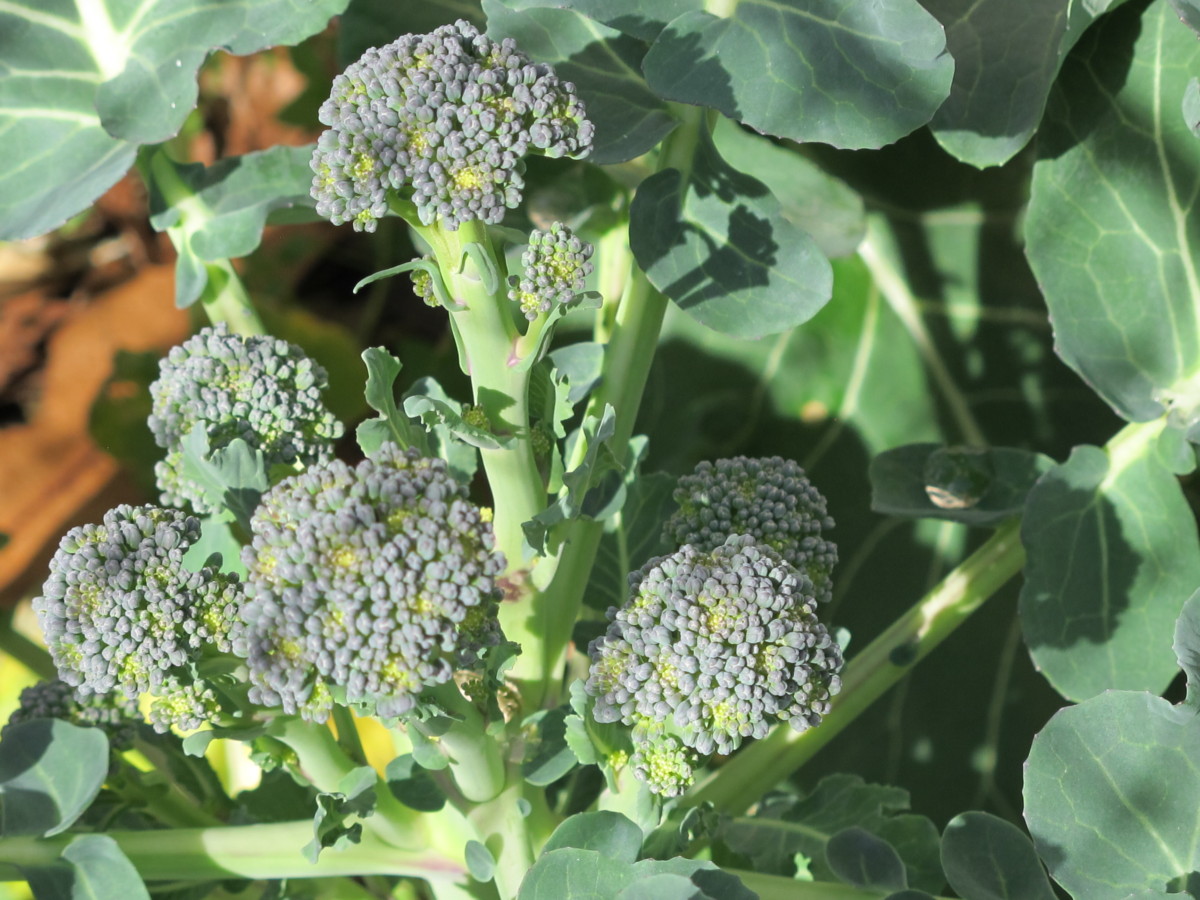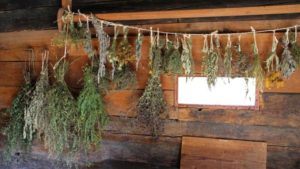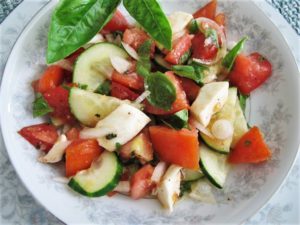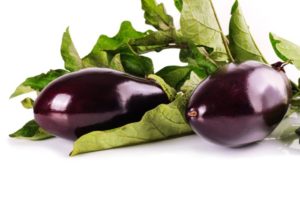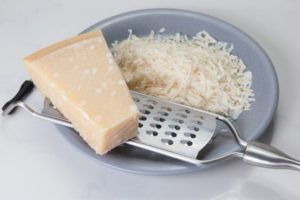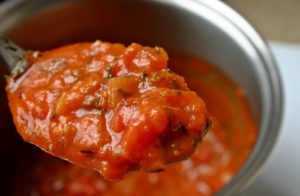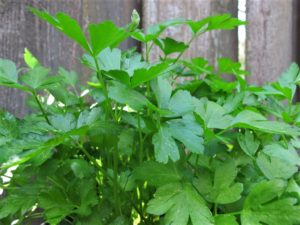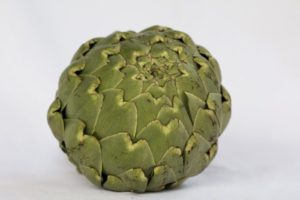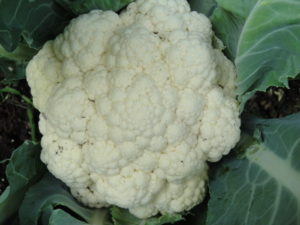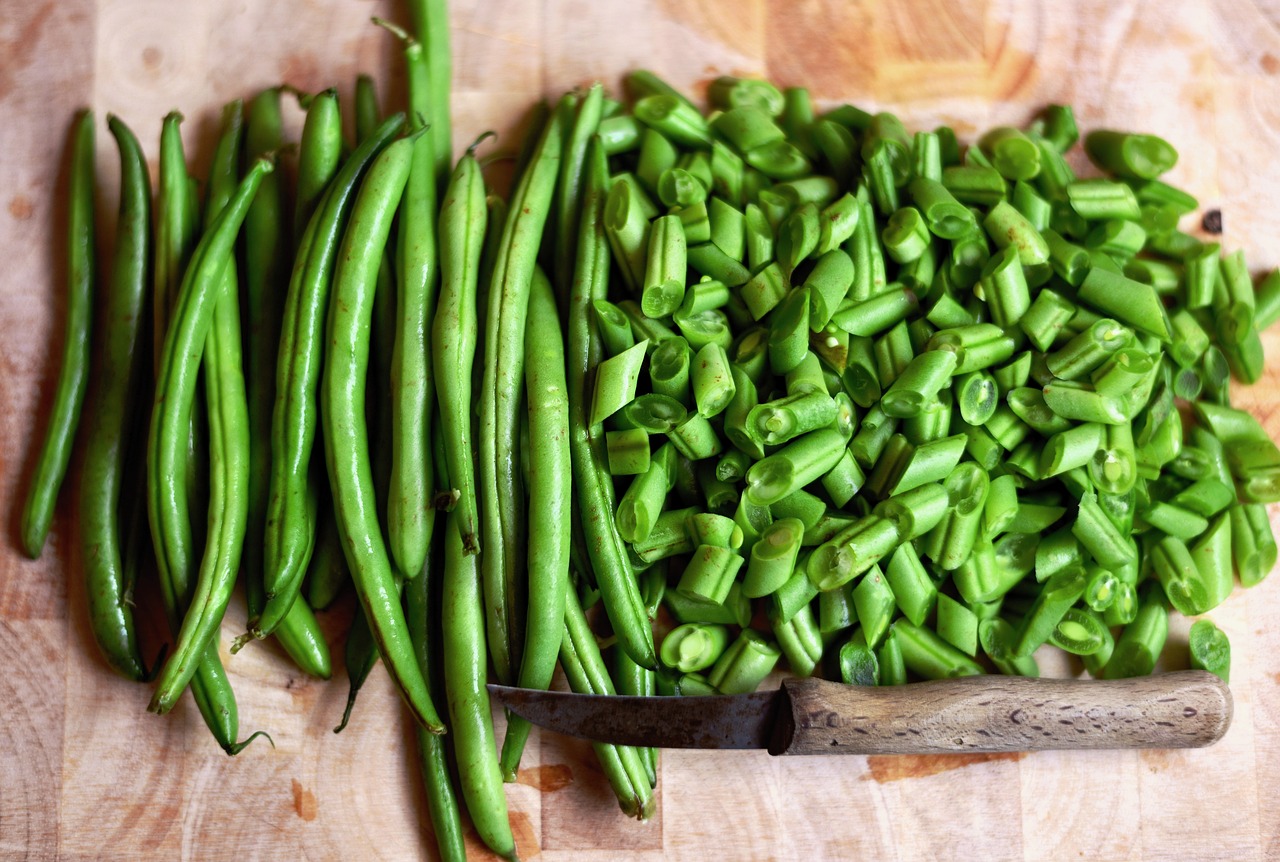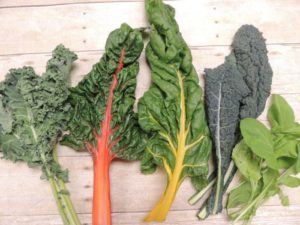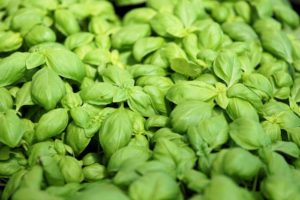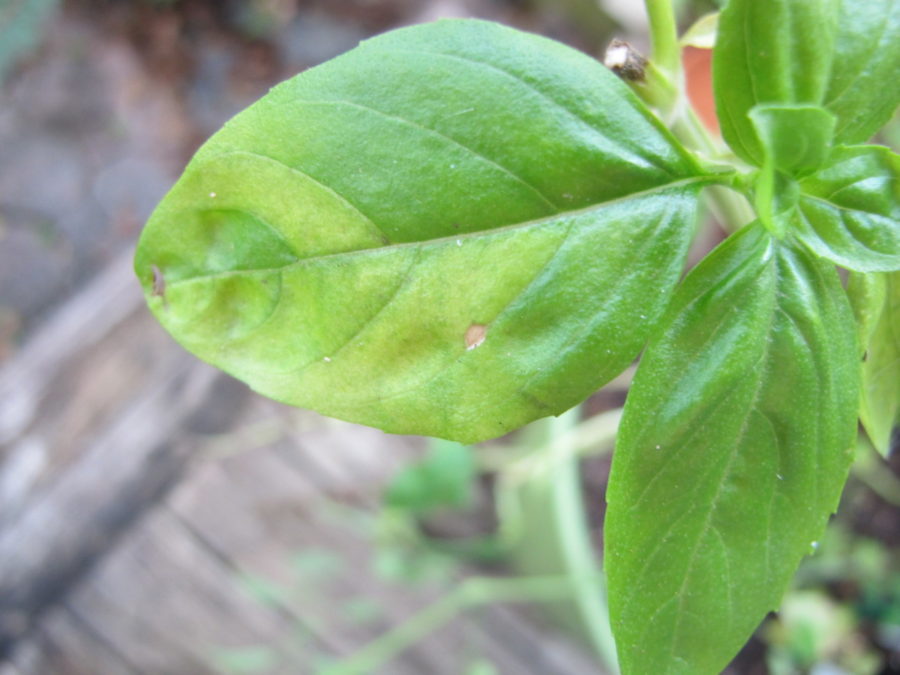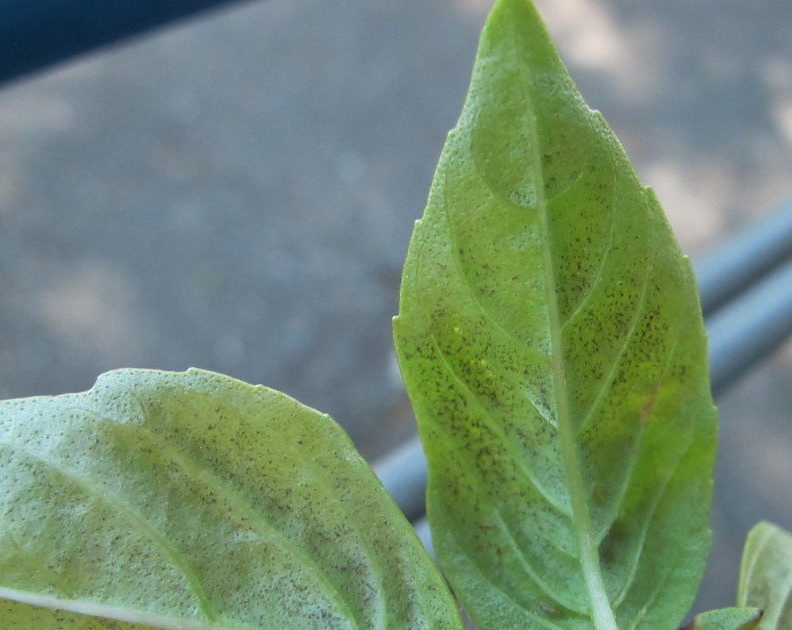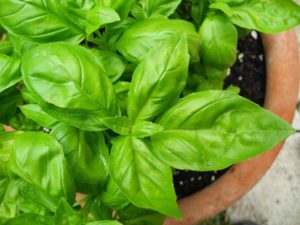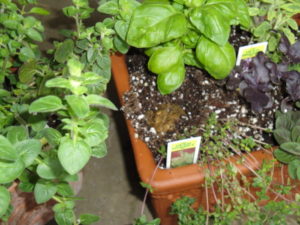2020
Updated 2/24/2025
Tomatoes, A Tribute to My Mother, Takotsubo, and A Tactic Called “Just One Leaf”
Open any food or garden section in print or online sites, and you’ll see articles on the benefits of eating healthy greens and colorful foods. Today, I’ll show how you can start adding leafy greens to your diet without being terribly inconvenienced. And I’ll mention how it might have saved my life.
How exciting—the first two ripe tomatoes of the season came off the vine this morning. And there’s some beautiful ‘Genovese’ basil begging to be picked. So, you can guess what will be served tonight:

Tomato-Basil Salad!
It’s so easy to prepare:
- ripe tomatoes, cut into chunks, including the juice
- freshly picked sweet basil
- cucumber, cubed or sliced
- thinly sliced onion
- mozzarella cheese
- Italian oregano
- extra virgin olive oil
- red wine vinegar
- salt and pepper
Mix it all together, and enjoy with some good bread for dunking (optional). This salad hits the spot when it’s hot, for one person or for a crowd.
But First, A Tribute To My Mother
My mother and I have lived together for the past 7½ years. Many of the ripe tomatoes from the garden ended up in tomato-basil salad, a summertime staple for this family of Italian descent. How we loved our eggplant parmigiana, vegetarian lasagna, manicotti, and stuffed artichokes! How we loved to eat! In so many of our memories growing up and growing older—the holidays with family, sitting around the table for hours—good food always featured prominently.
Early last month, I had notified my family that there wasn’t much time left for Mother. So, my siblings prepared for a visit, and my sister sent an early Mother’s Day bouquet of white roses, purple statice, and baby’s breath—very much appreciated.
One brother came from out of town and spent the day with us, recalling some of the funnier family moments. We had ravioli and Easy Broccoli One for dinner. I’m a firm believer in the health-giving powers of broccoli, so I prepared it one way or another quite often. I’ve joked before about broccoli being Mother’s “favorite”, and she did too. “Oh, what a surprise—broccoli … … thank you…” She ate well that evening, better than any day in recent months.
But, the next morning, her time had come. She passed quickly and peacefully while I spoke to her and with 9-1-1. A friend said that the sense of hearing is the last to go, which gives some consolation, knowing she might have heard me.
“Don’t Forget To Watch Bob Ross”

My mother lived for 95 years, leaving behind a brood of 4 children, 11 grandchildren, and 8 great-grandchildren. Photographs of family reunions, grandkids, and the great-grandchildren sat in a neat pile within reach of her favorite chair. Mother often lamented the fact that the family had scattered all over the country and couldn’t get together more often for the holidays.
She enjoyed driving her little Toyota, running errands nearby, right up until early last year. Have Rollator, will travel! When speaking with friends on the phone, her humorous references to the “joys” of growing old brought a smile to my face. Humor is the best medicine.
She was an artist, as a few relatives are and were, and I’m inclined to pick up the brush myself and give it a whirl (photo, above—a detail from one of her paintings). I don’t have to wonder very long where this stubborn streak of independence or rebelliousness came from…or my love of animals and of all nature. So, maybe some of her talents run through my veins as well. I hope so. Sure, we had occasional disagreements, but the foundation of our commitment to family was unshaken.
Stress, Nevertheless
People often speak of “a good death”, and, in all honesty, we could not have asked for a more peaceful departure. The next few days, though, taught me that the body reacts to experiences differently than the brain does. While my brain thought I was handling this major event quite calmly, my body had a different opinion.
Soon after Mother had died, the four of us siblings got together, telling stories while dividing those belongings she had gathered—and loved—for nearly a century. Whether it was the distress of a misplaced ring or the stress of her passing, I ended up in the hospital three days later.
With Covid concerns at the time, I drove myself to the emergency room, with moderate chest pain. My mother had had serious heart disease for a few decades but was able to function fairly normally with assistance from her medications and her cardiologist. But I had to wonder: is it my turn? My blood pressure had soared to a dangerous level, so I was admitted.
After several tests over the next two days, the doctors did not find any “separation of the layers” or blockages in my coronary arteries, and the valves were working as they should. But my blood pressure stayed very high. Blood tests also showed the presence of those markers when the heart has been impaired.
One consequence of blood pressure this high could be stroke, and my release from the hospital was contingent upon healthier numbers. A few medications attempted to normalize the readings, and one in particular did an astonishingly good job of lowering those numbers to 79/51. Won’t be taking that one again! (It was hydralazine.)
Takotsubo Two!
Almost 4 years previously, I woke at 4:00 in the morning with a stabbing pain in the center of my chest. Considering our family history, I thought it could have been a heart attack. The ambulance came, the EMT recorded my blood pressure at 275/135, and off to the hospital I went.
The usual tests were performed, and a cardiologist administered a catheterization to trace the blood flow in and around my heart. The score: although I was lightly sedated, his words indicating that I had “the arteries of a 20-year-old” were music to my ears. After decades of being more than careful with diet, I wondered if I had needlessly missed out on all those BLT’s, pasta, and toffee cookies.
On the day of discharge from the hospital, another cardiologist explained what happened. He said one of the lower chambers of the heart (the left ventricle) had ballooned out, giving it an odd outline. Good news—I would fully recover but would experience fatigue for a few months. He and a dietician recommended continuing with a diet heavy in healthy leafy greens and losing some weight.
What’s Takotsubo?
That’s when I first heard the term “Takotsubo”. This Japanese word means “octopus pot”, a reference to the interior shape of the affected ventricle. The syndrome was first described in Japan in 1990. More than 90% of the cases involve women, aged 58 to 75 (check, and check).
So, it happened again. This time, though, stress was very much the precipitating cause. Often called “broken heart syndrome” or “stress-induced cardiomyopathy”, a sudden life-changing event, such as the loss of a loved one, winning a lottery, being assaulted, or a car accident, can trigger Takotsubo syndrome. Most cases are due to a stressor, but around one-fourth occur for no discernible reason.
The ring, by the way, was found after my return from the hospital.
Add Just a Little More Green

Greens from the garden: green onion, mustard greens, dinosaur kale, arugula, ‘Red Russian’ kale.
I’m not a nutritionist. All I know is what I’ve read or heard over the years and observed from family members. The purpose for writing this article is simply to credit how changing my diet many years ago might have prevented a stroke or a heart attack, possibly saving my life during these two bouts with Takotsubo. (Even though the death rate from this condition is fairly low, other contributing factors and our family history concerned me.) You, too, might decide to make some improvements in your own family’s habits.
Take from it what you want—and take heart—this doesn’t have to happen overnight. I encourage you not to wait, however, until after you’ve gotten your first stent to make some changes. We did eat pretty well growing up. But, in retrospect, we consumed more carbohydrates than is currently considered healthy, and certainly fewer healthy greens.
Simply adding fresh leafy greens to soup, a smoothie, sauces, salads, a stir-fry, store-bought pizza, or rice and pasta dishes is a great step toward a healthier future. Grocery stores offer a much wider variety of greens than they did decades ago.
Growing your own plants from seed opens up so many more options. And you can’t beat the convenience of walking a few feet out the kitchen door to pick fresh healthy greens for today’s omelet or soup. Many of them can be grown in pots on the deck or the balcony if you don’t have garden space.
At the end of this article is a list of links to posts I’ve written about growing and using greens. You’ll notice the frequency with which I refer to “the brassicas” (broccoli, cabbage, cauliflower, collards, kale, etc.), the source of the most beneficial and densely packed nutrients.

Try this: a simple egg salad sandwich, on rye, made with one hard-boiled egg, mayonnaise, green olives, chopped dinosaur kale (a brassica, and super healthy), and topped with lettuce. Add chopped onion, if you like. No salt needed. I usually serve it on a bed of lettuce or mixed greens, without the bread. You can do the same with tuna or chicken salad. Adding “Just One Leaf” of kale significantly elevated the nutritional value.
Greens In Small Steps
Easing into dietary improvements by making small changes might meet with less resistance from your family. Perhaps starting a garden and letting the kids participate will get them engaged.
Children who help care for a garden are more likely to eat what they harvest. Start with easy crops, such as dinosaur or ‘Red Russian’ kale, collards, lettuce, a cherry tomato, Swiss chard, and radishes. Mustard greens are colorful and fast-growing—‘Florida Broadleaf’ has mild mustard flavor (and it self-seeds), while ‘Scarlet Frills’ offers a spark of heat and spice. These are easily grown from seed.

Nasturtium ‘Alaska’, easy from seed, needs darkness for germination.
If your garden has good, rock-free soil, sow a pack of carrot seeds, and thin them properly. You’ll find traditional orange carrots and also nearly white, yellow, red, and purple varieties. ‘Rainbow’ is a blend of colors. Watch how excited your children will be when they harvest their buried treasure! Try growing ‘Adelaide’, a miniature carrot, in 6″ pots. Delicious, and so cute.
A customer at the farmers’ market in Rockville MD added chopped ‘Alaska’ nasturtium flowers and leaves to his grilled hamburgers. Each bite revealed a different combination of colors. Every year, he came to the market for his “burger-fetti” nasturtiums. Look for ways to introduce greens and colors at mealtime to make it fun.
Just One Leaf
As the first bits of greens have been accepted, keep adding more leafy greens (Just One Leaf or two at a time) and cutting down on some of the carbohydrates and animal proteins. Get creative in the kitchen. Soon, you’ll notice a boost in energy and might reach for a cup of tea and a handful of nuts for a mid-afternoon snack, packed with vitamins and minerals, fiber, phytonutrients, and protein, instead of soda and a chocolate doughnut.
Unless it’s absolutely necessary, I never peel fruits and vegetables. The skins have more antioxidants, fiber, and vitamins than the flesh. So, I don’t peel apples, peaches, carrots, cucumbers (some are less bitter, such as ‘Diva’ and ‘Mini Me’), eggplants, sweet/white/pigmented potatoes, tomatoes, or zucchini.
But I Miss My…
Once in a while, it’s perfectly okay to indulge in an ice cream sundae or Christmas cookies. But you might find that the desire for such decadent treats decreases as your interest in healthy foods increases. Sugar is addictive!
Over time, adding healthy greens to the spaghetti sauce, a stir-fry, or the morning smoothie will become second nature. Not doing so might make you feel as though you’re missing out.
Eat Your Colors

Ripe sweet bell peppers.
You’ll discover a new appreciation for incorporating colorful greens and vegetables into your salads. Deep green, purple, red, orange, and yellow vegetables are filled with healthy antioxidants and other nutrients.
These plant pigments help prevent many major illnesses, including cancer, heart disease, type 2 diabetes, age-related macular degeneration, inflammation, premature aging, and other disorders. Understand that they will help prevent illness. Do your best to eliminate other risk factors, too, and you know what they are.
Ask your doctor if you have any dietary concerns. While it is true that spinach, Swiss Chard, and beet greens (in the Amaranthaceae family) are high in oxalates, we need to examine the relationship between oxalate content and kidney stones. Some nutritionists believe that including more meat in the diet lowers the blood pH level, while a primarily plant-based diet raises the pH and lowers the incidence of kidney stones. Kale, incidentally, has extremely low levels of oxalates.
Another issue is how eating large amounts of certain raw brassicas can affect the thyroid gland, so, again, ask your doctor.
Add these to your salad and you’ll soon say good-bye to pale iceberg wedges:
- deep green and red lettuces
- purplish ‘Red Russian’ or blue-gray dinosaur kale (brassica)
- baby beet greens (more nutrients than the roots)
- turnip greens (brassica)
- arugula (brassica)
- spinach
- Swiss chard
- radish (brassica)
- shredded red cabbage (brassica)
- Asian greens, such as tatsoi, mustard, mizuna, napa cabbage, ‘Tokyo Bekana’ (brassicas)
- broccoli leaves, or stems, leaves, and small heads of ‘Happy Rich’ (brassicas)
- purple and orange carrots (heated carrots have more available antioxidants)
- ripe lunchbox sweet pepper (red, orange, yellow) and bell peppers (orange bell peppers are extremely high in zeaxanthin, an antioxidant that’s good for eyesight)
- tomato, cucumber, green onion, celery, cooked button mushrooms, lightly roasted pecans, feta or bleu cheese, fresh basil, avocado, a hard-boiled egg, kalamata olives
- and a simple homemade dressing: extra virgin olive oil, red wine vinegar, water, fresh minced garlic, some herbs (small amounts of Italian oregano, and maybe thyme and sweet marjoram) and lemon if you like, some Dijon mustard, and salt and pepper

Colorful lettuces.
Headings
Page 1: Tomato-Basil Salad, But First, A Tribute To My Mother (Stress, Nevertheless, Takotsubo Two!), Add Just a Little More Green (Greens In Small Steps, Just One Leaf, But I Miss My…), Eat Your Colors, and Add these to your salad…
Page 2: The Veggie Omelet With Greens (Juice?, Or Cereal?), How It All Began (Close To Home, The Food Pyramid), But How Safe Are the Complex Carbs? (The Insulin Response, Too Many Carbs), In Conclusion, and Links
Return to the top










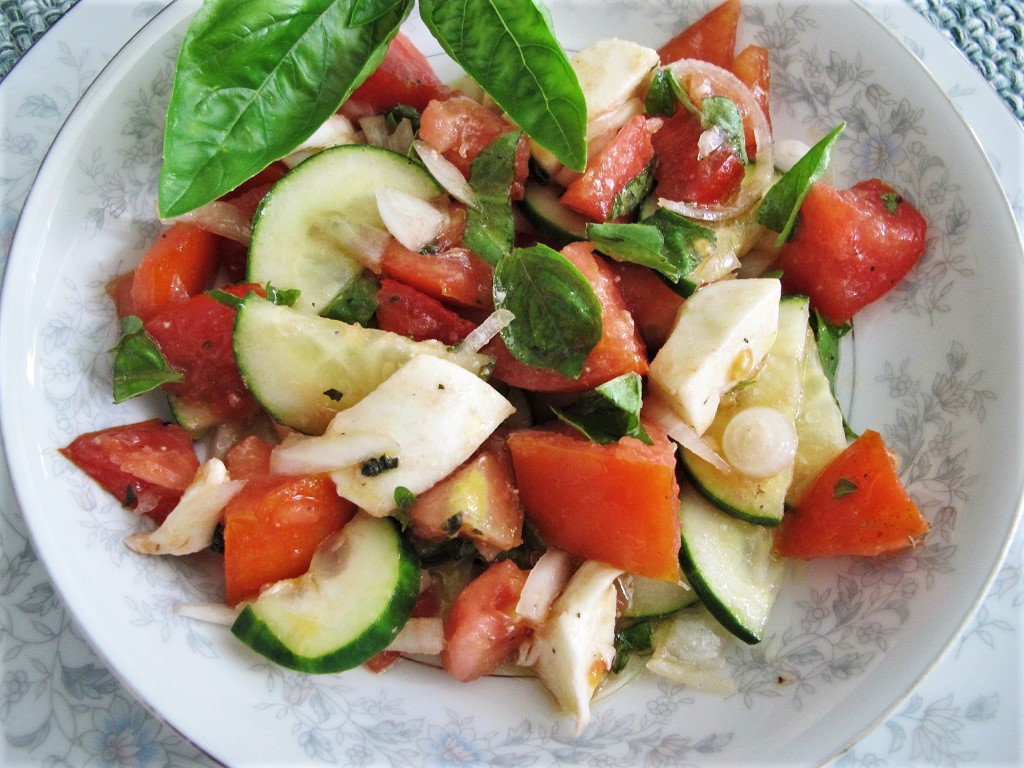

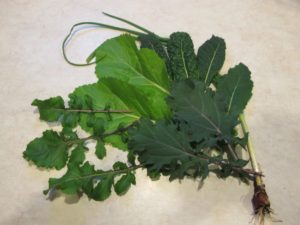
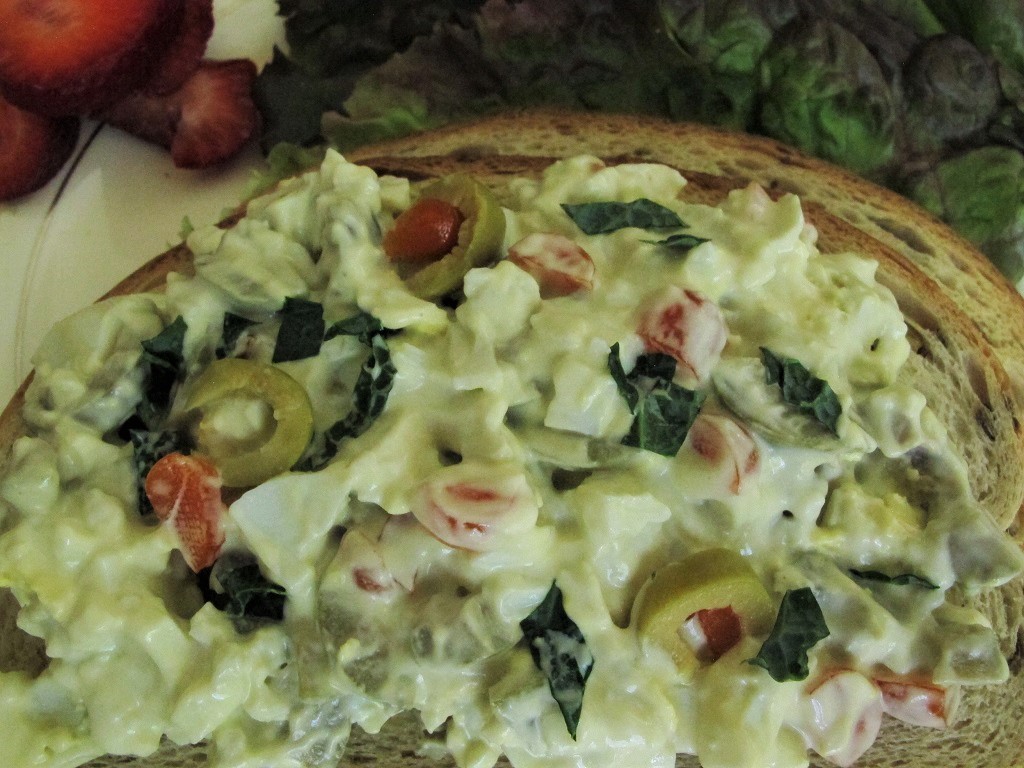

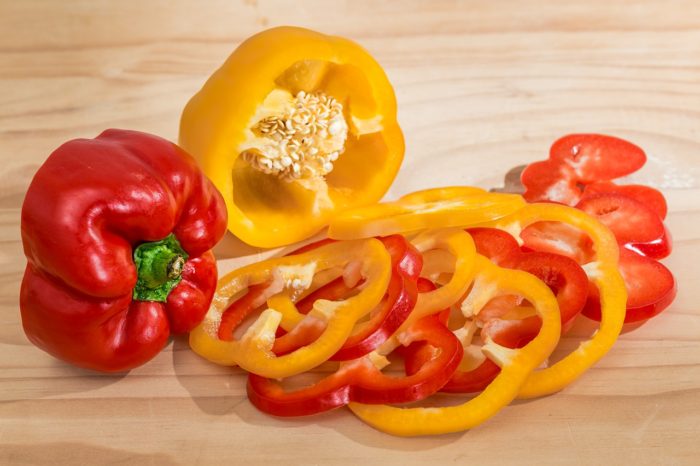
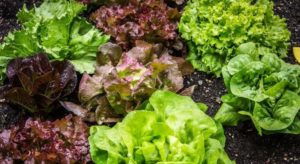

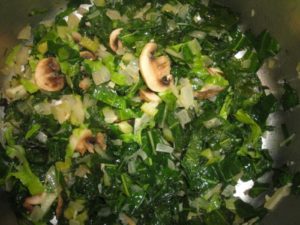
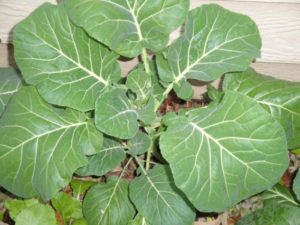





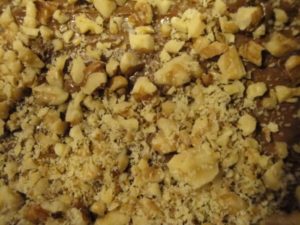




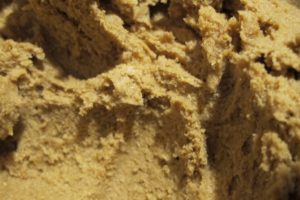


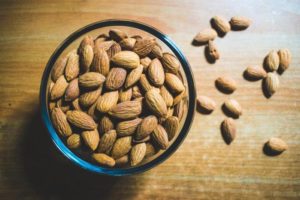


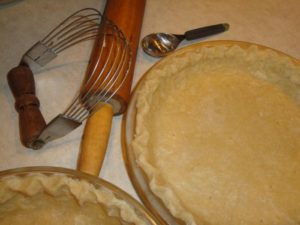




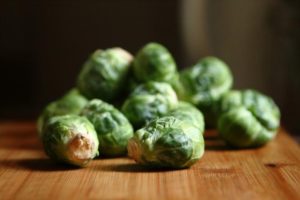

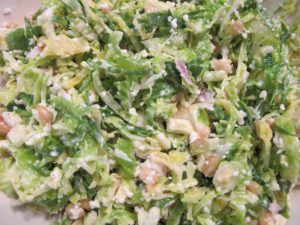

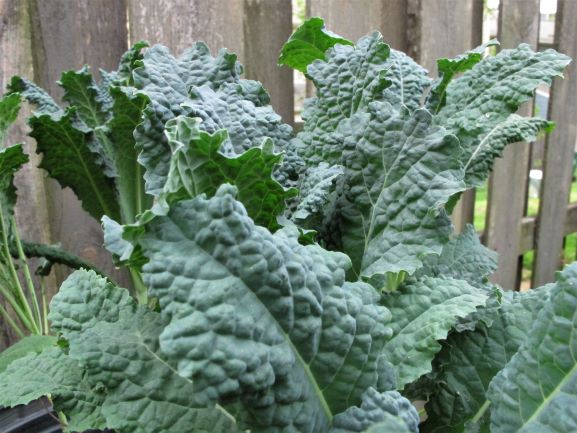
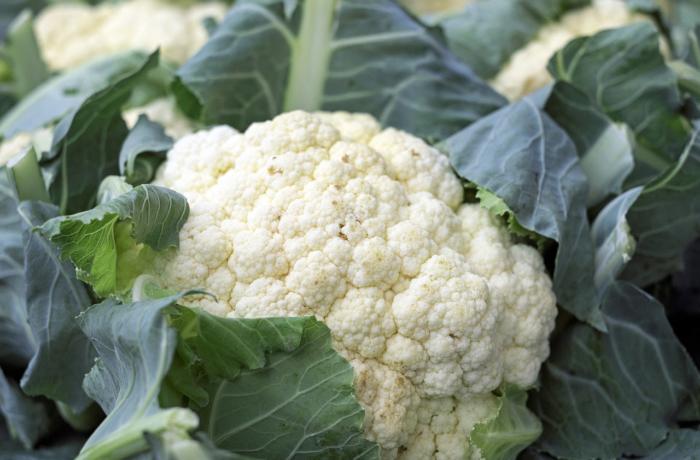
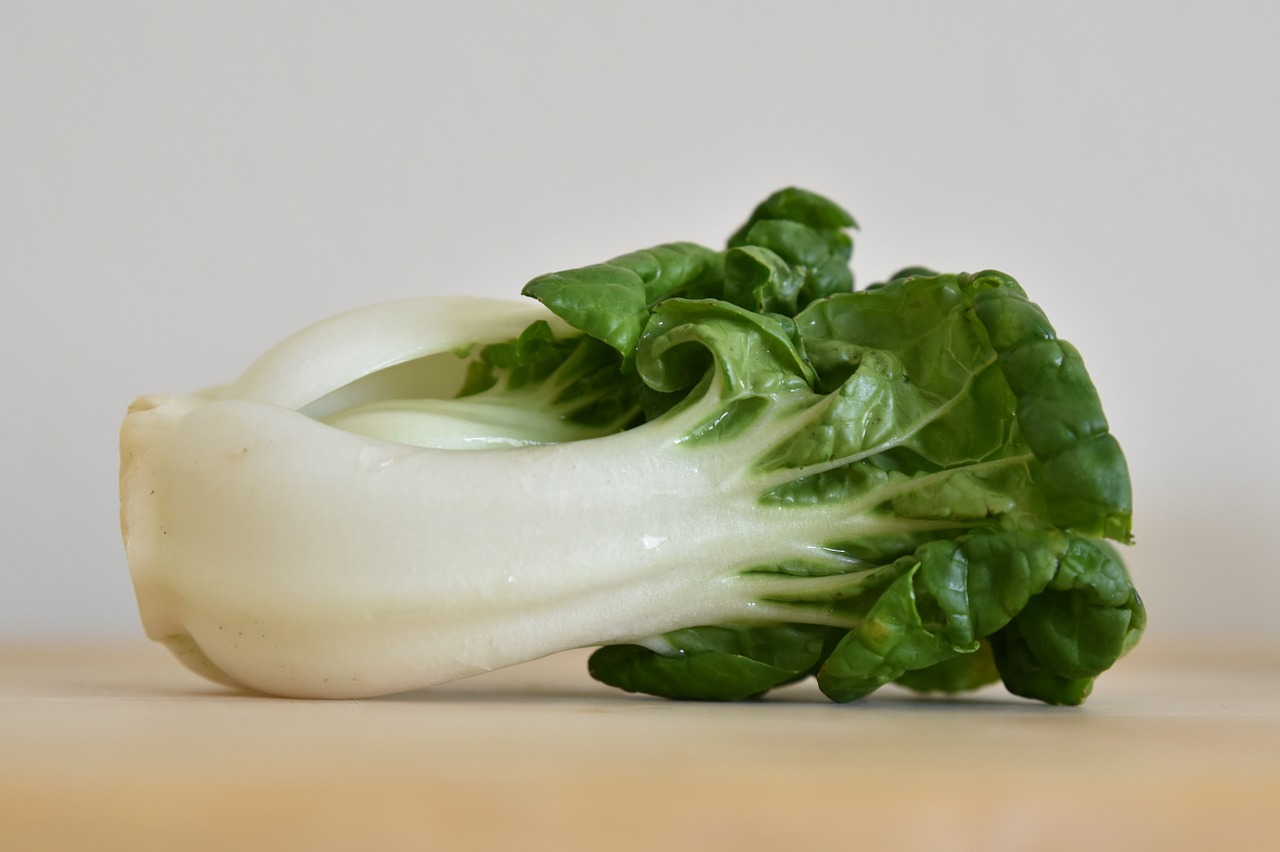
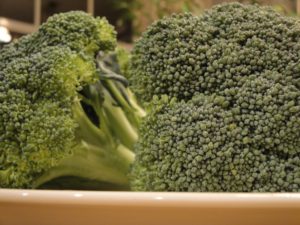

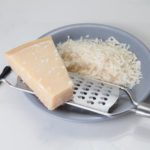 In a medium frying pan, add about 2 Tbsp. thinly sliced onion and 1 or 2 Tbsp. olive oil. On medium heat, cook and turn until onion is transparent to a light golden color.
In a medium frying pan, add about 2 Tbsp. thinly sliced onion and 1 or 2 Tbsp. olive oil. On medium heat, cook and turn until onion is transparent to a light golden color.